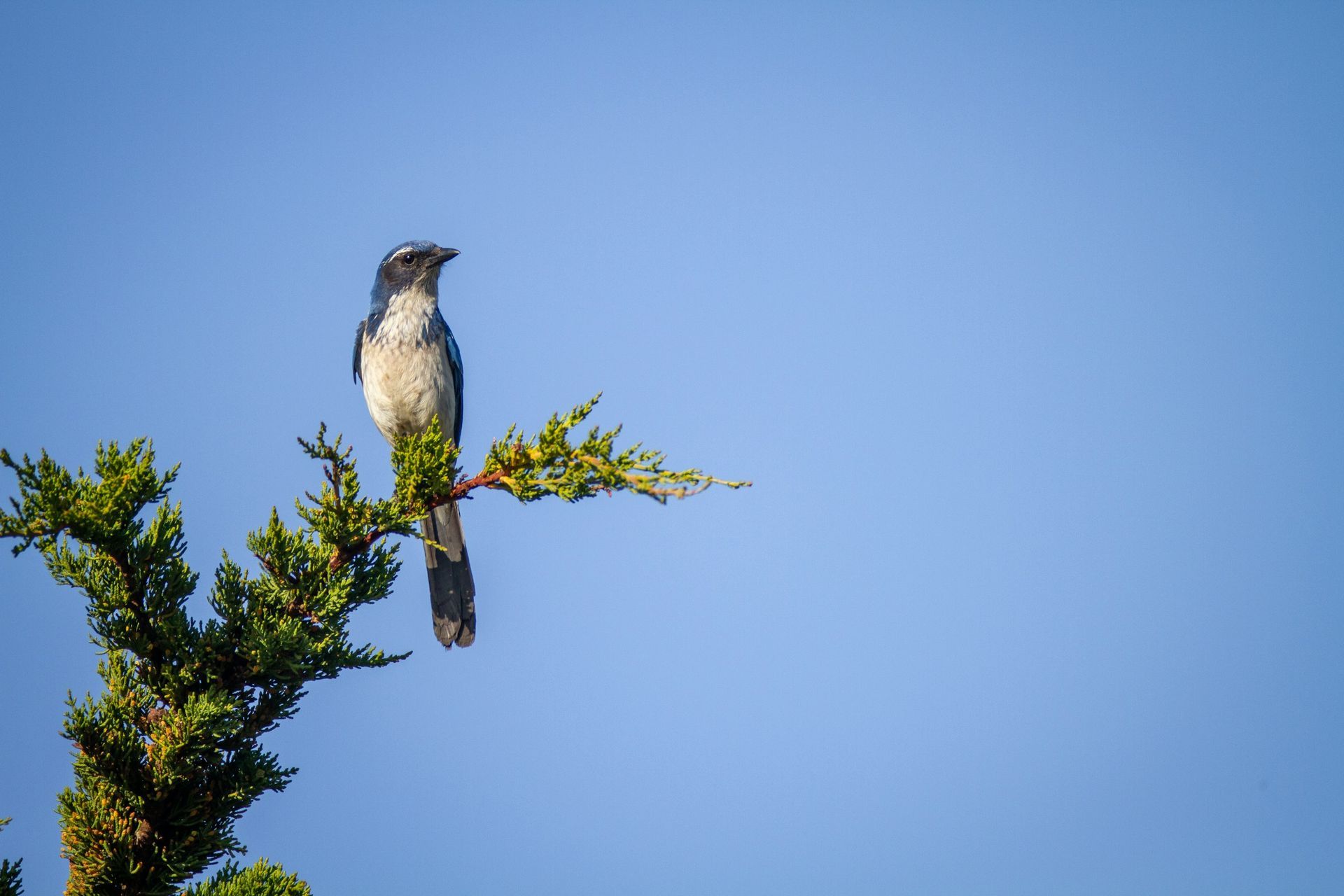Jays are intelligent and bold songbirds known for their vibrant plumage and complex social behaviors. Found in forests, woodlands, and suburban areas, jays are highly adaptable and play an important role in ecosystems by dispersing seeds and controlling insect populations. Common species in North America include the California Scrub-Jay (Aphelocoma californica) and the Steller’s Jay (Cyanocitta stelleri).
Jays typically measure between 10-13 inches in length and have striking plumage that ranges from blue and black to shades of gray and white, depending on the species. They are known for their loud, varied calls and their remarkable ability to mimic other birds and even human sounds. Jays are omnivorous, feeding on a mix of insects, nuts, seeds, fruits, and small vertebrates.
During the breeding season, jays form monogamous pairs and build cup-shaped nests in trees or shrubs. The female lays 3-6 eggs, and both parents share in raising the young. Jays are highly social and will often cache food in various locations, returning to retrieve it later.
Natural predators include hawks, snakes, and domestic cats. Human-related threats such as habitat loss, window collisions, and pesticide use also affect jay populations. Despite these challenges, jays have successfully adapted to human environments and are frequent visitors to backyards and parks.

For your safety and the well-being of wildlife, please observe animals from a distance and avoid touching or disturbing them. If you encounter an animal that appears injured or in distress, contact a licensed wildlife rescue organization for guidance before intervening.
Found An Animal? Not sure how to help a wild animal in need? Learn when to step in, who to call, and how to help safely.
Did You Know?
- Jays have exceptional memory and can remember the locations of hundreds of food caches.
- The Steller’s Jay is the only jay species with a black crest on its head.
- Jays are known to mimic hawk calls, possibly to scare other birds away from food sources.
- They are highly curious and have been observed stealing shiny objects like coins and jewelry.
- Jays play a crucial role in forest regeneration by dispersing acorns and other seeds, often forgetting some of their caches, which grow into new trees.
- California Scrub-Jays have been observed holding “funerals” by gathering around deceased individuals and calling loudly.
- Jays can adapt their vocalizations depending on their environment, using softer calls in dense forests and louder ones in open areas.
- They are capable of solving complex problems, showing intelligence comparable to that of some primates.
- Some jay species, like the Blue Jay, have feathers that appear blue due to the scattering of light, not because of blue pigments.
Problems Faced In The Wild
- Habitat Loss: Urban development reduces nesting and foraging areas.
- Window Collisions: Reflective glass poses a significant danger during flight.
- Pesticide Use: Chemicals reduce insect populations and can poison birds indirectly.
- Predation: Free-roaming cats and other predators are a major threat to jay populations.
- Climate Change: Altered weather patterns impact food availability and breeding success.
- Competition for Resources: Invasive bird species can displace native jays.
Tips For Cohabitation
- Plant Native Trees and Shrubs: Provide natural foraging and nesting opportunities.
- Avoid Pesticides: Use eco-friendly pest control methods to protect insect populations.
- Install Window Decals: Reduce collisions by making glass more visible to birds.
- Offer Bird Feeders with Nuts and Seeds: Jays are especially fond of peanuts and sunflower seeds.
- Educate Others: Share the ecological importance of jays in seed dispersal and pest control.



